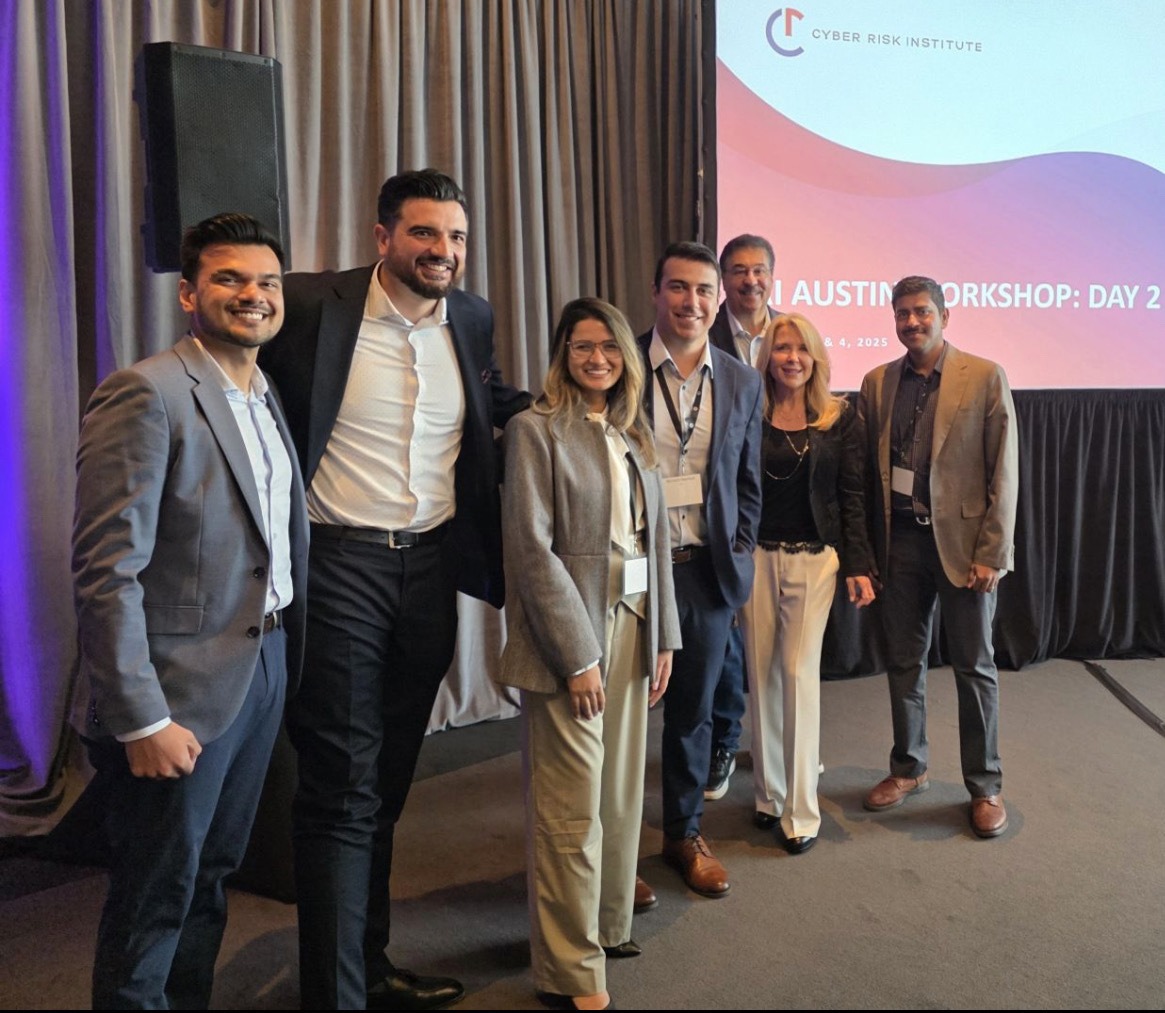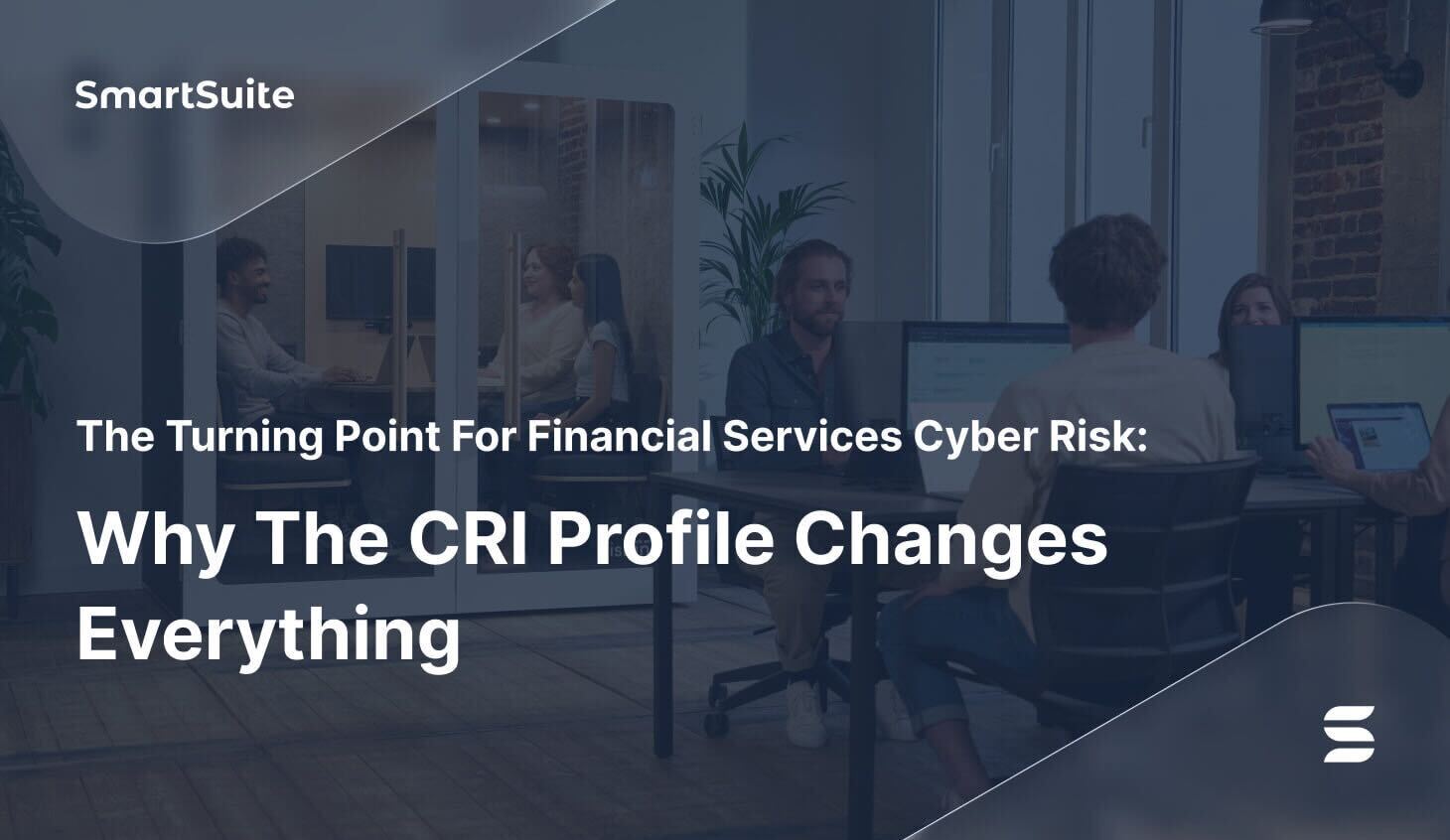For twenty-five years I’ve lived and breathed Governance, Risk, and Compliance.
For twenty-five years I’ve lived and breathed Governance, Risk, and Compliance. From founding Archer IRM and helping shape what became today’s GRC market, to building SmartSuite as a next-generation work-management platform for GRC, ITSM, Cybersecurity, Business Resilience, Business Operations and more, I’ve watched our industry evolve from spreadsheets and siloed assessments to integrated systems of record.
But something new is happening — something bigger than any single product, framework, or regulation.
A Shared Language for Cyber Risk
For the first time, boards, regulators, and institutions across the financial-services sector are aligning around a common framework for cybersecurity and operational resilience — the Cyber Risk Institute (CRI) Profile.
The CRI Profile isn’t another checklist. It’s the product of a non-profit consortium of financial institutions, trade associations, consulting firms, and technology vendors — all working together to harmonize the patchwork of regulatory expectations into a single, structured methodology.
Built on the NIST Cybersecurity Framework, the Profile translates more than two thousand supervisory expectations into a unified taxonomy that can be measured, benchmarked, and reported consistently.
It gives risk, compliance, and technology leaders a shared language to evaluate maturity, identify gaps, and demonstrate accountability. In an industry where even small misalignments can cause confusion between business lines or regulators, this common ground is transformative.
The Shift I Witnessed in Austin
Last week I attended the Cyber Risk Institute Conference in Austin, Texas. When I walked into the main hall and saw five institutions on stage sharing how they’re using the CRI Profile to transform their risk programs, I knew the industry had reached a turning point.
For the first time in my career, I saw genuine momentum — not just among practitioners, but at the board and executive levels. Institutions weren’t theorizing; they were presenting tangible results, metrics, and methodologies that are reshaping how cyber risk is governed.

One institution shared that by shifting to a CRI Profile-based assessment process, they reduced regulatory overlap by 30 percent — eliminating duplicative audits and consolidating reporting across multiple frameworks. That’s not just efficiency; that’s clarity at scale.
The mood in the room was electric. Risk and compliance leaders from across the globe were exchanging stories of real progress. After twenty-five years of watching frameworks come and go, this was the first time I’ve seen such broad, authentic enthusiasm for a shared model of cybersecurity maturity.
Why This Moment Matters
Financial services has always been heavily regulated — but rarely synchronized. Each regulator, region, and line of business spoke a slightly different language of risk.
The CRI Profile is changing that by introducing a common thread:
- For financial institutions: a single structure to unify internal assessments, reporting, and remediation.
- For regulators: a baseline for evaluating cyber maturity across diverse institutions.
- For consultants and auditors: a common taxonomy that accelerates engagements and reduces interpretive friction.
- For technology vendors: a consistent foundation for integrating content, controls, and evidence collection.
The result is more than operational efficiency — it’s cultural alignment. Conversations that used to take months of translation between departments now happen in real time. When everyone uses the same diagnostic statements, the dialogue shifts from “Which standard do we pick?” to “How do we execute and improve?”
Collaboration at Scale
What’s most inspiring about CRI is its collaborative DNA. This isn’t a framework delivered by a regulator or sold by a vendor. It’s a coalition effort built by the industry, for the industry.
Member institutions — from global systemically important banks to community financial organizations — contribute expertise directly into the framework. They’re joined by regulators, advisory firms, and major consulting networks (including several of the Big Four) who help refine mappings and governance models.
This partnership model means the Profile evolves with the landscape. When new regulatory guidance emerges or when global cyber incidents shift priorities, the community rapidly adapts diagnostic statements to reflect current realities.
The CRI team deserves enormous credit. As a non-profit entity supported by its members, they’ve achieved what many thought impossible: getting competitors to collaborate on the language of risk.
At the Austin conference, that collaboration was on full display. I watched panels featuring CISOs from major banks sitting alongside consulting partners and vendors — not debating frameworks, but discussing outcomes. They were sharing data, comparing maturity trends, and collectively exploring how to automate evidence collection and resilience testing.
That level of transparency simply didn’t exist a decade ago. It’s evidence of a maturing ecosystem — one that recognizes cyber risk as a shared challenge, not a competitive differentiator.
SmartSuite’s Role as a CRI Innovator
At SmartSuite, we’re proud to be recognized as a CRI Innovator, working directly with the Institute to embed the Profile’s content and logic into our Risk Management Solution.
At the Austin event, our team — including Tara Darbyshire and Preson Gillum — presented a live demonstration of how the CRI Profile can be operationalized in a modern workflow platform.

We showed how diagnostic statements become actionable tasks within SmartSuite, how mappings automate reporting across frameworks, and how cross-framework alignment becomes visible to every stakeholder in real time.
The demo highlighted three practical capabilities that resonated deeply with attendees:
- Dynamic mapping across frameworks. By aligning CRI Profile statements with NIST CSF, ISO 27001, and FFIEC CAT controls, customers can manage multiple regulatory obligations through a single interface.
- Continuous evidence management. SmartSuite automations can flag control failures, route tasks to owners, and maintain audit trails — all while linking back to the CRI diagnostic statements.
- Executive-level reporting. Dashboards translate technical control data into the business-level language of the CRI Profile, allowing boards and regulators to see cyber posture at a glance.

While technology is only one piece of the puzzle, it’s rewarding to see how tools like SmartSuite can bring the Profile to life — turning documentation into daily workflow.
Our mission has always been to connect people, processes, and data. Partnering with CRI lets us extend that philosophy to the heart of cyber risk, helping institutions operationalize resilience rather than merely report on it.
The Broader Impact
The implications of widespread CRI Profile adoption extend well beyond cybersecurity.
- Third-Party Risk. Vendors and service providers can align assessments with the same framework, reducing redundant questionnaires and accelerating onboarding.
- Operational Resilience. By linking cyber controls to business-continuity metrics, organizations gain a unified view of resilience across technology and operations.
- Global Consistency. Because the CRI Profile maps to major international standards, multinational institutions can harmonize programs across regions without starting from scratch.
- Data Interoperability. As more vendors adopt the CRI taxonomy, data exchange between platforms becomes simpler — paving the way for AI-driven insights and benchmarking.
In essence, the Profile provides the Rosetta Stone of risk management: a translation layer that allows financial institutions, auditors, regulators, and vendors to communicate with unprecedented precision.
Looking Ahead
Every major shift in the GRC landscape begins when enough leaders agree to stop reinventing the wheel. That’s what’s happening now.
The release of CRI Profile 2.0 earlier this year expanded its reach to include enterprise technology, third-party risk, and operational resilience — domains that define modern financial-services risk.
As adoption accelerates, I believe we’ll look back on this moment as the one where the industry finally turned the corner toward true standardization and shared understanding.
And we’re only at the beginning. The next horizon will involve deeper integration with automation, AI, and real-time analytics. Imagine a future where CRI Profile statements serve as the foundation for machine-readable compliance data, feeding dashboards that continuously measure resilience and risk posture. That future isn’t far away.
Gratitude and Momentum
To the Cyber Risk Institute, its Board, and the member institutions, consultants, and partners leading this work — thank you.
Your commitment to collaboration is reshaping how financial services manages cyber risk. I also want to recognize the colleagues, friends, and industry leaders who shared their insights at the Austin conference — the energy, transparency, and willingness to collaborate were unlike anything I’ve seen since the early days of Archer.
And to the CISOs, CROs, and Risk Leaders I speak with daily: this is the moment to lean in. The frameworks are mature. The tools are ready. The ecosystem is aligned.

The financial-services industry has finally found its common language of risk — and the possibilities from here are limitless.
Jon Darbyshire is CEO and Founder of SmartSuite and previously founded Archer IRM, one of the first enterprise GRC platforms. He continues to work closely with financial institutions, regulators, and technology partners to advance the future of integrated risk management.

Run your entire business on a single platform and stop paying for dozens of apps
- Manage Your Workflows on a Single Platform
- Empower Team Collaboration
- Trusted by 5,000+ Businesses Worldwide















